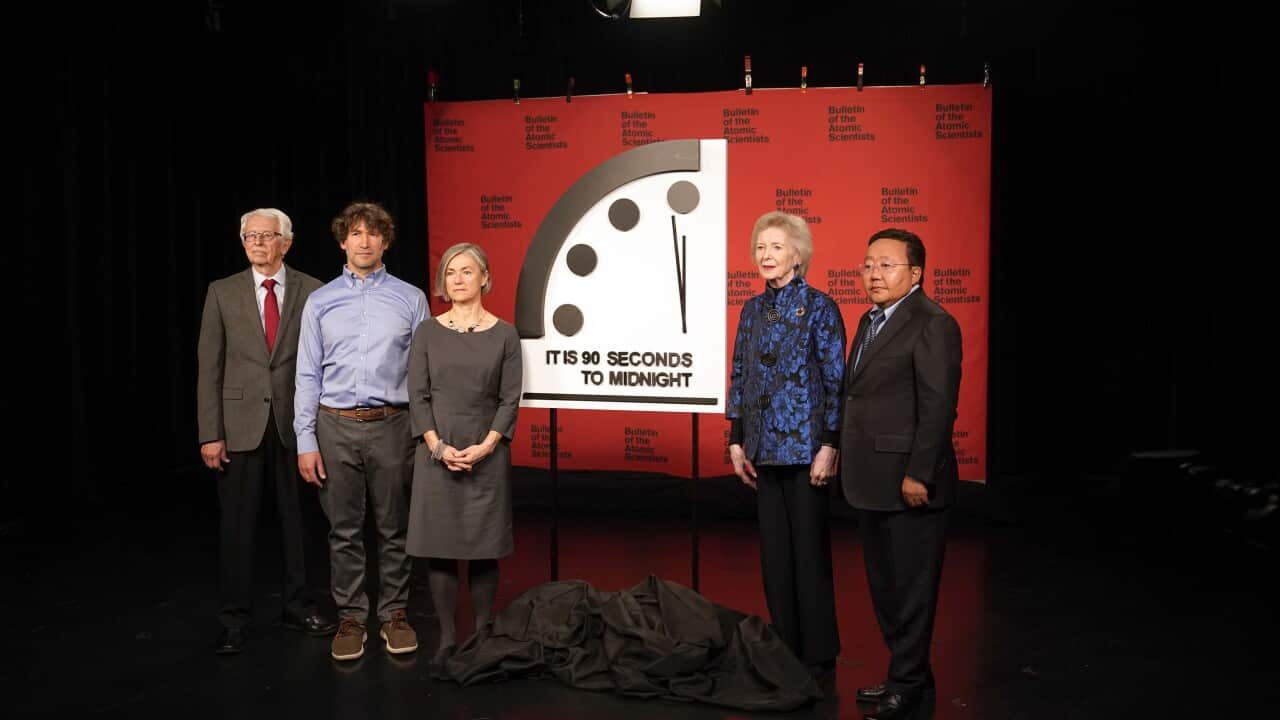Atomic scientists reset the on Tuesday, moving its hands to 90 seconds to midnight - closer than ever before to the threat of annihilation.
The Doomsday Clock is a symbolic timepiece showing how close the world is to ending. Midnight marks the theoretical point of annihilation.
Apocalyptic threats could arise from political tensions, weapons, technology, or .
The hands of the clock are moved closer to or further away from midnight based on the scientists' reading of existential threats at a particular time.
How is the Doomsday Clock set?
A Chicago-based non-profit organization called the Bulletin of the Atomic Scientists updates the time annually based on information regarding catastrophic risks to the planet and humanity.
A board of scientists and other experts in nuclear technology and climate science, including 13 Nobel Laureates, discuss world events and determine where to place the hands of the clock each year.
The clock was created in 1947 by a group of atomic scientists, including Albert Einstein, who had worked on the Manhattan Project to develop the world's first nuclear weapons during World War Two.

2023 marks the first time the "Doomsday Clock" has moved since it was set at 100 seconds to midnight in 2020. Source: Getty, AFP / Eva Hambach
Why have scientists moved it closer to midnight?
At 90 seconds to midnight, the Doomsday Clock is now the closest it has ever been to midnight. It is the first time it has moved since it was set at 100 seconds to midnight in 2020.
Its setting reflects a world in which has revived fears of nuclear war. The war was largely but not exclusively the reason for the hands moving forward, the scientists said.

A Ukrainian soldier in an armoured vehicle during combat training in Zaporizhzhia region, Ukraine, on Tuesday. Source: AP / Kateryna Klochko/AP
Sivan Kartha, a bulletin board member and scientist at the Stockholm Environmental Institute, said natural gas prices pushed to new heights by the war had also spurred companies to develop sources of natural gas outside of Russia and turned power plants to coal as an alternative power source.
"Global carbon dioxide emissions from burning fossil fuels, after having rebounded from the COVID economic decline to an all-time-high in 2021, continue to rise in 2022 and hit another record high... With emissions still rising, weather extremes continue, and were even more clearly attributable to climate change," Mr Kartha said, pointing to the devastating flooding in Pakistan in 2022 as an example.









